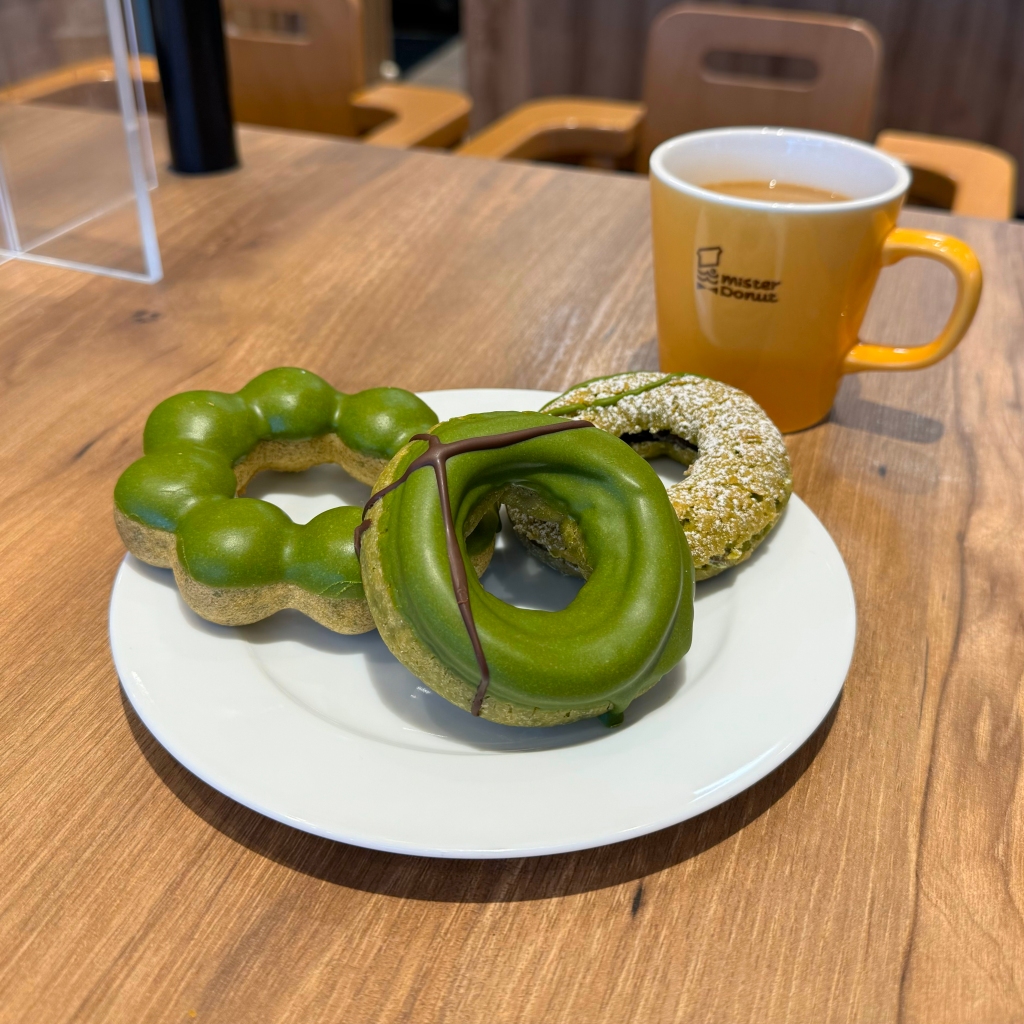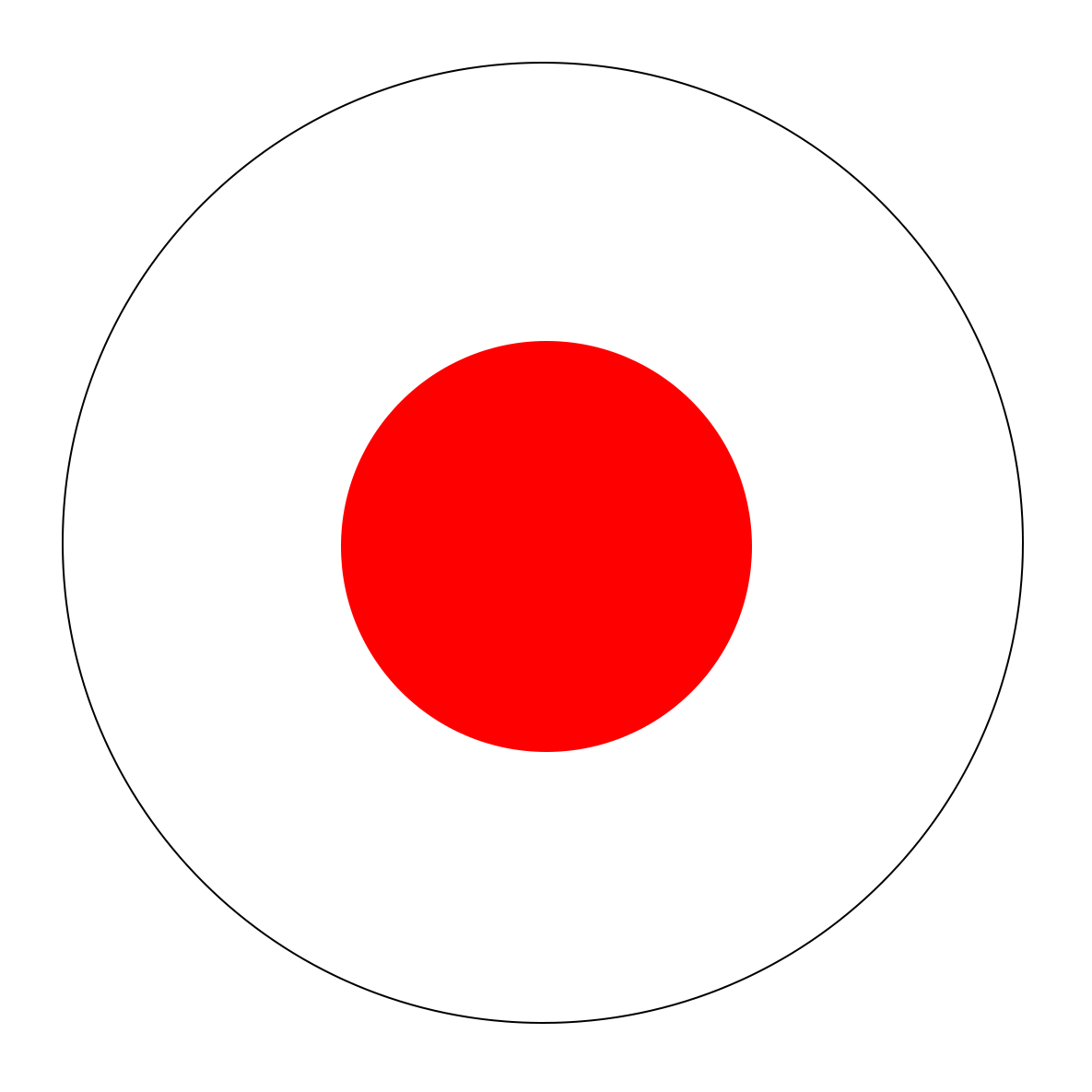
Before we begin, an allegory: There was once a king named Midas. King Midas loved gold so much that he made a deal with a magical something-or-other that everything he touched would become gold. And that became a problem because everything he touched did, in fact (or fiction, in this case) became gold: his food, his clothes, his loved ones, his toilet paper, it all turned into cold, hard, glistening gold. This is where the saying “the Midas touch” comes from.
This tale teaches us that too much of a good thing can be bad.
Turning this story to our topic at hand, it would seem that Mister Donut, Japan’s premier purveyor of holeish delights has developed the Matcha touch… and they need to darn well keep their magic matcha fingers away from their donuts.

For the uninitiated, matcha is a bitter green tea that is exceptionally traditionally Japanese. It’s most commonly consumed dried into a powder and mixed with piping hot water, served alongside traditional Japanese foods, but you can buy chilled bottles of it in a weakened form to drink at home or on the go. Additionally, the powder can be mixed into foods to give them a kind of bitter, metallic edge that lingers in the back of the palate. Too much matcha in a dish and the bitter rushes to the forefront and crowds out any other flavors that might be trying to reach the door before the taste train leaves the station.
It’s quite normal for Mister Donut to add a little matcha to their donut mix. A sprinkling of matcha balanced out with the sweetness of a light sugary glaze can be just the boost a donut needs to make it the perfect coffee dipping companion.
But a little matcha goes a long way. These latest seasonal treats are advertised as thick with matcha and that they are.

Of the five donuts in this year’s limited matcha range, we tried three: the Thick Donut with Thick Matcha Cream, the Thick Donut with Fluffy Whipped Matcha, and the Pon de Ring Double Uji Matcha. Those are the actual names, which makes one thing apparent right from the very start: While the Japanese may be excellent at serving up a side of delicately filleted raw fish, they are downright terrible at naming donuts.
THICK DONUT WITH THICK MATCHA CREAM


They say: “The Uji matcha dough from [famous tea house] Gion Tsujiri has been richer and thicker than at any time in the history of Mister Donut! The smooth, rich matcha cream is squeezed into the moist texture of the Uji matcha dough, which is then coated with matcha chocolate. This is a dish made with matcha that allows you to fully enjoy the deliciousness of matcha.”
We said: “Oh God this is disgusting, all I taste is bitter and dough, get this out of here.”
THICK DONUT WITH FLUFFY WHIPPED MATCHA


They say: “Azuki bean paste and soft, melt-in-your-mouth strong matcha whipped cream are sandwiched between the moist texture of Uji matcha dough. This donut is made with the highest concentration of Uji matcha from [famous tea house] Gion Tsujiri in the history of Mister Donut! This is a dish that you can enjoy with the matcha ingredients topped with marron glacé as an accent to the texture.”
We said: “Bleh. I need a swig of coffee to get this taste out of my mouth.”
PON DE RING DOUBLE UJI MATCHA


They say: “The new Pon de Matcha dough is made with [famous tea house] Gion Tsujiri’s Uji matcha and coated with matcha chocolate. The dough and chocolate combine to create a matcha flavor.”
We said: “This really doesn’t taste like much of anything. It’s what I imagine eating slightly bitter, doughy packing peanuts must be like.”
As you may surmise, Mister Donut’s new offerings did not wow. In general, Japanese sweets are less, well, sweet, than Western sweets. A glance at the international sweetness scale developed by the Harshbarger Sweetness Commission of 1927 informs that American sweets are at the top of the scale with a sweetness ranking of 10,687 Harshbargers2 and Japanese sweets are at the bottom at just 208 Harshbargers2, illustrating the wide gap in the preference of sweetocity in their nibblins.
Casting aside technical jargon, what that means is that Americans tend to like things a whole lot sweeter than Japanese, who tend to enjoy more subtle flavors.
With this in mind, it’s important to note that a normal Japanese donut would probably not impress the average American. They would say that the donut wasn’t sweet enough and that it lacked flavor. While a Japanese person would probably say that an American donut was too sweet and inedible. Both would be an acquired taste from a cultural perspective.
But Mister Donut’s new matcha range oversteps the cultural line and barrels right into excess for excess sake. That is never a good thing. Even the Significant Other, who is Japanese, felt that perhaps Mister Donut had pushed the matcha envelope too far, but she is being kind. If what I had was a Captain Crunch cereal it would be called Oops! All Matcha!
So, while Mister Donut still makes a nice, light snacking donut (our favorites are Angel Cream, Double Chocolate, and good ol’ Old Fashioned Glazed) I would recommend you steer clear of the latest matcha range. They’ll be easy to identify when you’re in the store: they’re those donuts in the green packaging that everyone’s passing over for the better stuff.
While benefits can be had marching to a different drum, this time go with the crowd.

Leave a comment